The fields of application of our other speciality chemicals
The fields of application of our other speciality chemicals are as diverse as the chemicals themselves. Below you will find a list of a few typical areas of application:
- Used as organic intermediates
- Used as additives in the processing of plastics and in plasticizers
- Used as catalyst poison in the production of vitamins
- Used for the complexation of silver and in silver recycling
- Used as catalysts and stabilizers for PVC
- Used to insert thiol groups into molecules
- Used as an alternative to aqueous reducing agents for the destruction of peroxides
The speciality chemicals produced by Spiess Chemicals
1-Thioglycerol 90%
1-Thioglycerin is used in cosmetics as an organic intermediate for depilatories in high-purity quality and is also a component of hair setting products used to create waves or curls.
In biology, it is a reagent used in fluorescence, spectroscopy and microbiological processes.
It is used as a capping agent in the synthesis of nanocrystals.
For plastics, it is used as a flexibiliser during polymerisation.
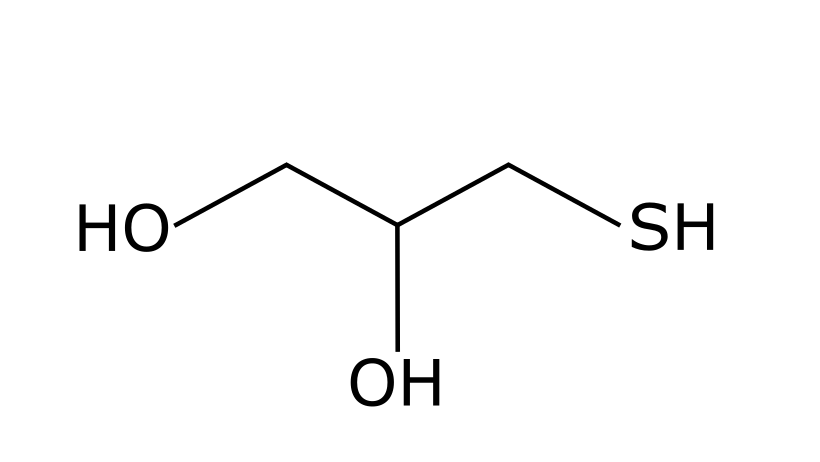
α-Thioglycerol
Monothioglycerol
1-Thio-2,3-propanediol
1,2-Dihydroxy-3-mercaptopropane
3-Sulfanylpropane-1,2-diol
99243
202-495-0
C3H8O2S
108,16 g/mol
1-Thioglycerol 97%
1-Thioglycerin is used in cosmetics as an organic intermediate for depilatories in high-purity quality and is also a component of hair setting products used to create waves or curls.
In biology, it is a reagent used in fluorescence, spectroscopy and microbiological processes.
It is used as a capping agent in the synthesis of nanocrystals.
For plastics, it is used as a flexibiliser during polymerisation.
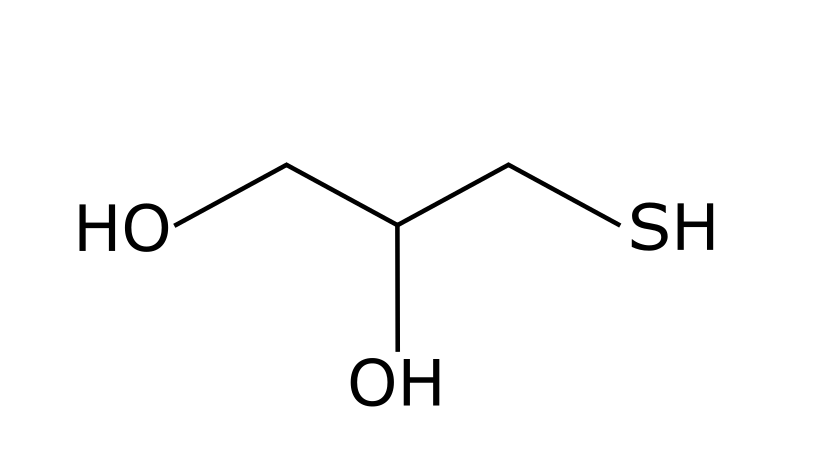
α-Thioglycerol
Monothioglycerol
1-Thio-2,3-propanediol
1,2-Dihydroxy-3-mercaptopropane
3-Sulfanylpropane-1,2-diol
99194
202-495-0
C3H8O2S
108,16 g/mol
3-Chlorpropionic Acid 80 %
3-Chloropropionic acid is used as an intermediate in the production of biocides, colourants, pharmaceutical products, cosmetic products and additives for plastics.
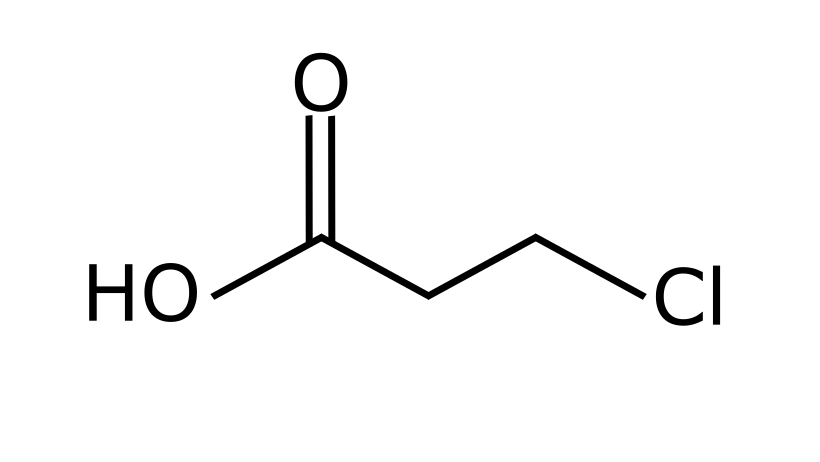
Chloropropanoic acid
β-Monochloropropionic acid
3-chloropropanoic acid
99764
203-534-4
C3H5CLO2
108,53 g/mol
3-Chlorpropionic Acid 98%
3-Chloropropionic acid is used as an intermediate in the production of biocides, colourants, pharmaceutical products, cosmetic products and additives for plastics.
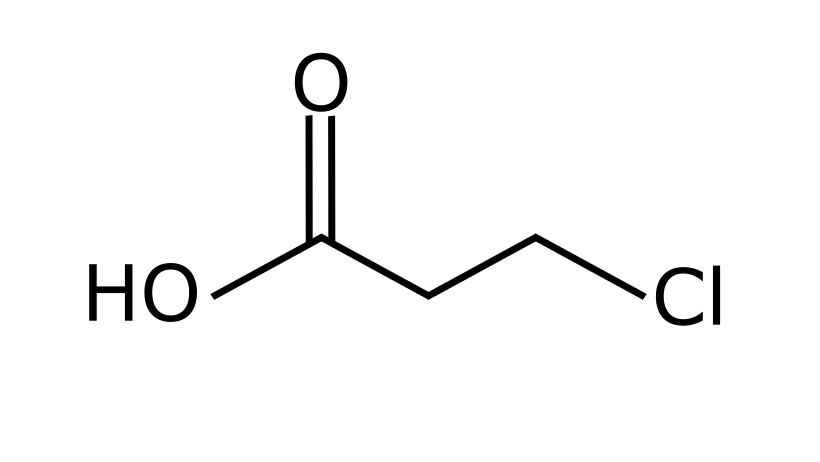
Chloropropanoic acid
β-Monochloropropionic acid
3-chloropropanoic acid
90193
203-534-4
C3H5CLO2
108,53 g/mol
3,3-Thiodipropionic Acid
3,3′-Thiodipropionic acid is an organic intermediate.
It is used as an additive for plastics processing, an antioxidant in food packaging, soaps, plasticisers, lubricants, greases and oils.
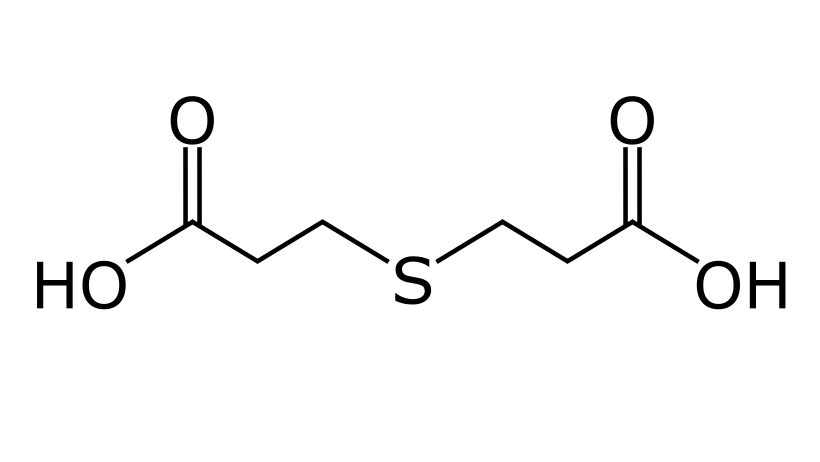
Bis(2-Carboxyethyl) Sulfide
Diethyl Sulfide 2,2′-Dicarboxylic Acid
Thiodihydacrylic Acid
ß,ß’-Thiodipropionic Acid
3-(2-carboxyethylsulfanyl)propanoic acid
99350
203-841-3
C6H10O4S
178,21 g/mol
3,6-Dithiaoctandiol-1,8
3,6-Dithiaoctanediol-1,8 is used to complex silver in silver recycling.
In the photographic industry, it is used to develop contrast, especially in X-ray photography. 3,6-Dithiaoctanediol-1,8 acts as a catalysing poison in vitamin production.
In scientific research, it supports the development of new drugs and therapies based on its unique chemical structure and biological activity.
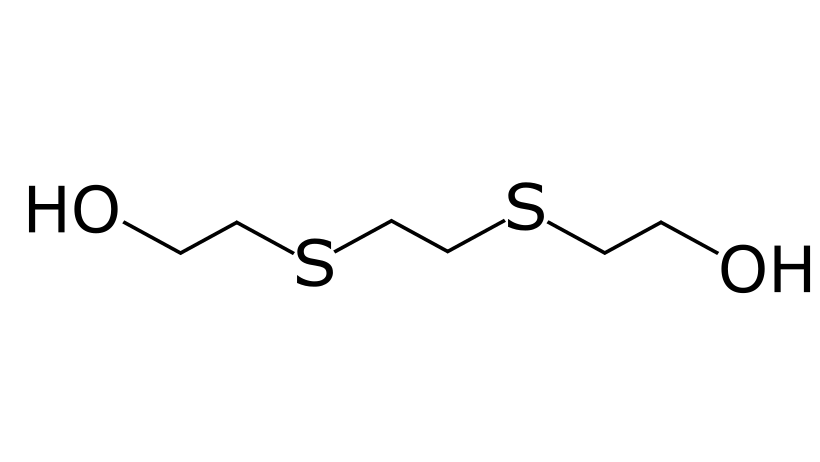
1,8-Dihydroxy-3,6-dithiaoctane
3,6-Dithia-1,8-octanediol
1,8-Dihydroxy-3,6-dithiooctane
Dithiotriethylene glycol
2,2′-Ethylenedithiobis(ethanol)
2-[2-(2-hydroxyethylsulfanyl) ethylsulfanyl]ethanol
98550
226-045-8
C6H14O2S2
182,31 g/mol
Dithiosalicylic Acid
Dithiosalicylic acid is an organosulphur intermediate.
It is used, for example, in the manufacture of a new class of anti-HIV-1 agents.
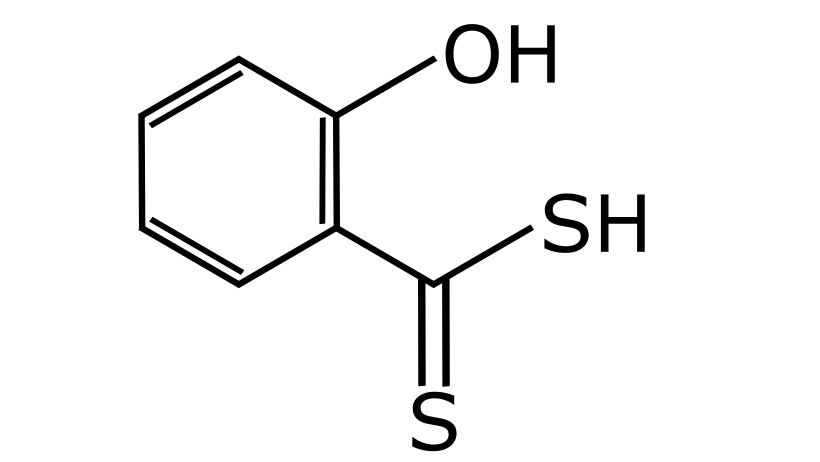
2,2′-Dithiobis[benzoic acid]
Bis(2-carboxyphenyl) disulfide
Diphenyl disulfide-2,2′-dicarboxylic acid
Bis(o-carboxylphenyl) disulfide
2-[(2-carboxyphenyl)disulfanyl]benzoic acid
99491
204-352-8
C14H10O4S2
306,36 g/mol
Glycolic Acid 57%
Glycolic acid is used in the textile industry for finishing and as a catalyser. In the leather industry, it is used for descaling animal hides, tanning and dyeing.
As a mild organic acid, it is used as a starting product in the synthesis of various esters.
Glycolic acid is used as an aqueous solution to remove rust from pipelines by chelating calcium and iron ions.
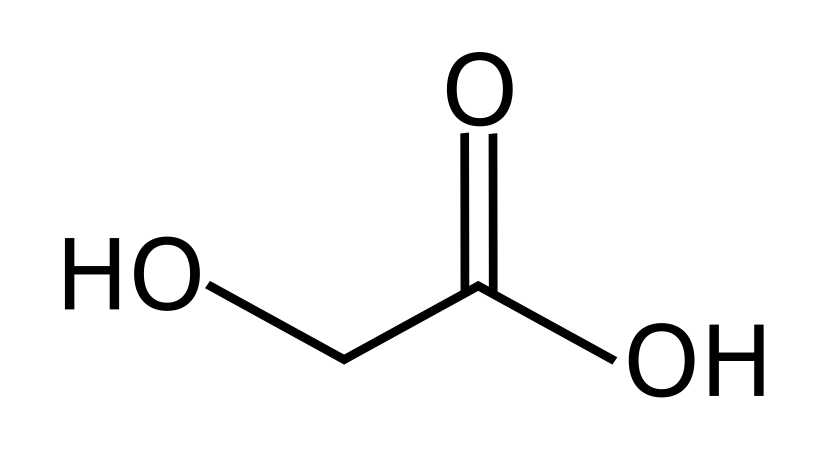
Hydroxyethanoic acid
α-Hydroxyacetic acid
2-hydroxyacetic acid
99440
201-180-5
C2H4O3
76,08 g/mol
Glycolic Acid 70%
Glycolic acid is used in the textile industry for finishing and as a catalyser. In the leather industry, it is used for descaling animal hides, tanning and dyeing.
As a mild organic acid, it is used as a starting product in the synthesis of various esters.
Glycolic acid is used as an aqueous solution to remove rust from pipelines by chelating calcium and iron ions.

Hydroxyethanoic acid
α-Hydroxyacetic acid
2-hydroxyacetic acid
99433
201-180-5
C2H4O3
76,08 g/mol
Levulinic Acid 90%
Levulinic acid serves as an important raw material in the chemical industry. It is used in the production of plastics and plasticizers, as well as for fossil oil in biorefineries. Levulinic acid, for example, is the starting material for various fragrances and flavorings, herbicides and pesticides and refrigerants.
It is used in cosmetics to regulate the pH value and, based to its antiseptic properties, prevent microorganisms from multiplying in the final product. Levulinic acid is a natural, plant-based alternative to synthetic preservatives.
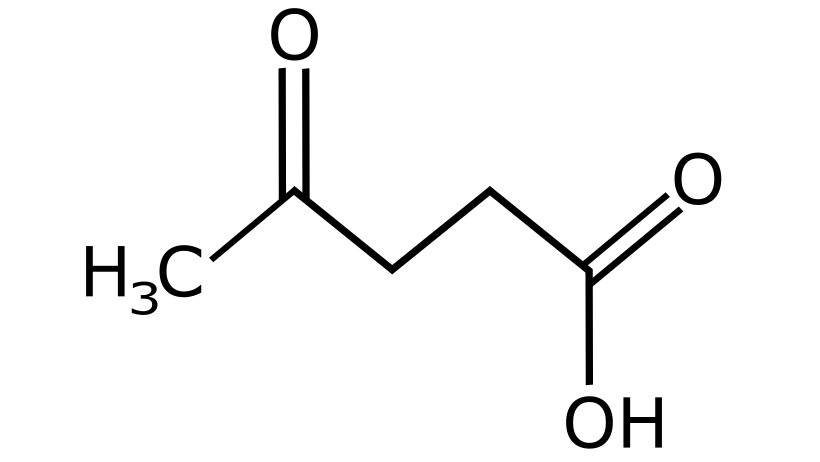
3-Acetylpropionic acid
4-Oxovaleric acid
3-Acetylpropanoic acid
β-Acetylpropionic acid
γ-Ketovaleric acid
4-oxopentanoic acid
98419
204-649-2
C5H8O3
116,12 g/mol
Levulinic Acid ca. 98%
Levulinic acid serves as an important raw material in the chemical industry. It is used in the production of plastics and plasticizers, as well as for fossil oil in biorefineries. Levulinic acid, for example, is the starting material for various fragrances and flavorings, herbicides and pesticides and refrigerants.
It is used in cosmetics to regulate the pH value and, based to its antiseptic properties, prevent microorganisms from multiplying in the final product. Levulinic acid is a natural, plant-based alternative to synthetic preservatives.
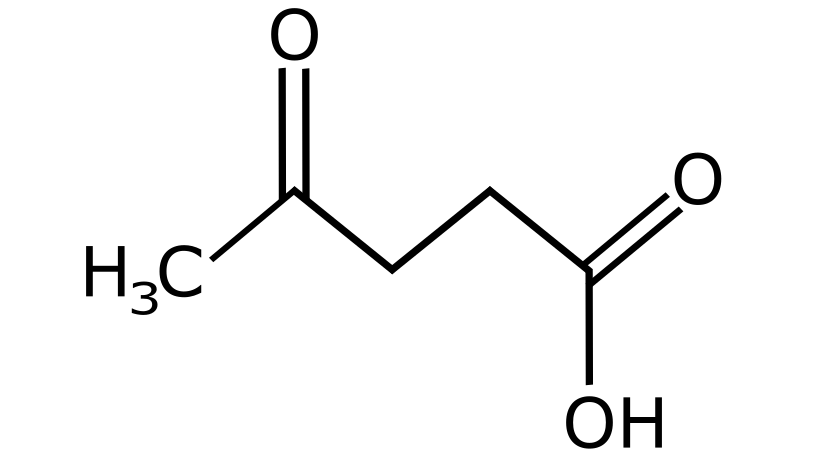
3-Acetylpropionic acid
4-Oxovaleric acid
3-Acetylpropanoic acid
β-Acetylpropionic acid
γ-Ketovaleric acid
4-oxopentanoic acid
98930
204-649-2
C5H8O3
116,12 g/mol
Levulinic Acid Ethylester 99%
Levulinic acid ethyl ester is an organic intermediate.
Based on green biomass, it contains a carbonyl group and an ester group.
Therefore it has good reactivity and can carry out various chemical reactions such as hydrolysis, reduction, condensation and nucleophilic addition.
Ethyl levulinate is therefore not only used in solvents, fragrances and flavorings, oil additives and plasticizers, but also as an important pharmaceutical and chemical raw material.
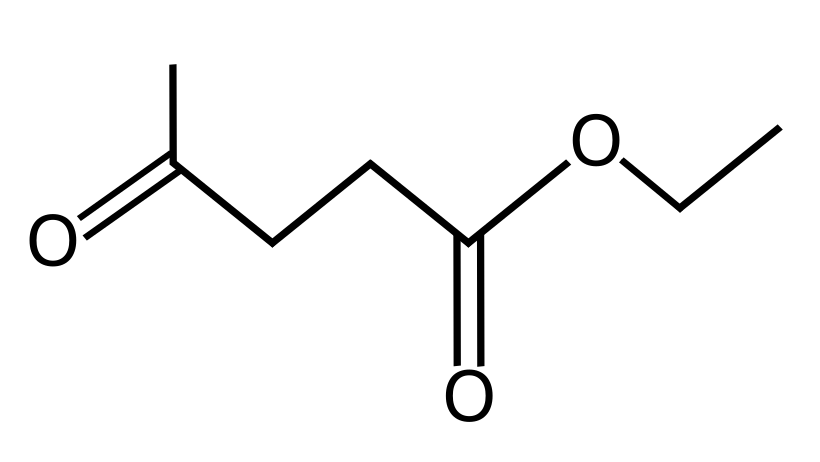
3-Acetylpropionic acid ethyl ester
4-Oxovaleric acid ethyl ester
3-Acetylpropanoic acid ethyl ester
β-Acetylpropionic acid ethyl ester
γ-Ketovaleric acid ethyl ester
ethyl 4-oxopentanoate
98815
208-728-2
C7H12O3
144,17 g/mol
Monoethanolamine
Monoethanolamine is an organic solvent.
It is used in the dye industry, as an additive in cleaning products and cosmetics, as an intermediate in the production of surfactants, in the pulp industry, and as a grinding aid in the production of cement.
Monoethanolamine serves as an intermediate for the production of other chemical compounds such as 2-mercaptothiazole, phenylethanolamine and ethylenediamine.
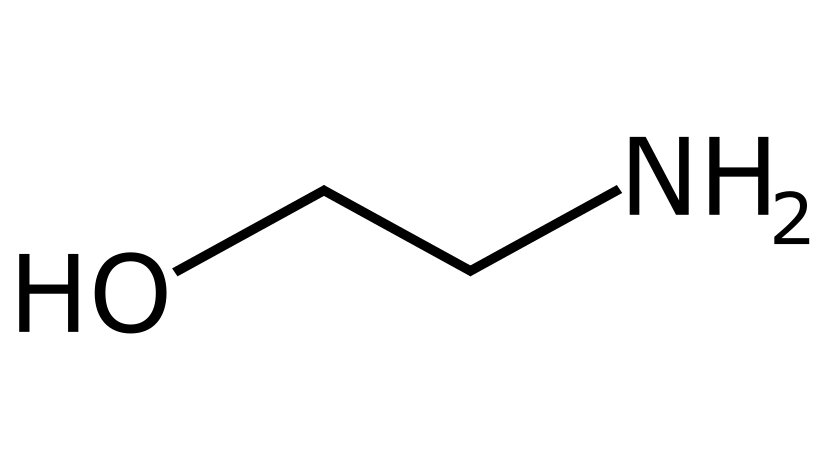
Ethanolamine
2-Hydroxyethylamine
2-Hydroxyethanamine
1-Amino-2-hydroxyethane
MEA (alcohol)
2-aminoethanol
99003
205-483-3
C2H7NO
61,08 g/mol
Sodiumbromate
Sodium bromate is an organic intermediate and strong oxidizing agent. In organic chemistry it is used as a bromination reagent for aromatic compounds. It is used as a single crystal for piezoelectric components.
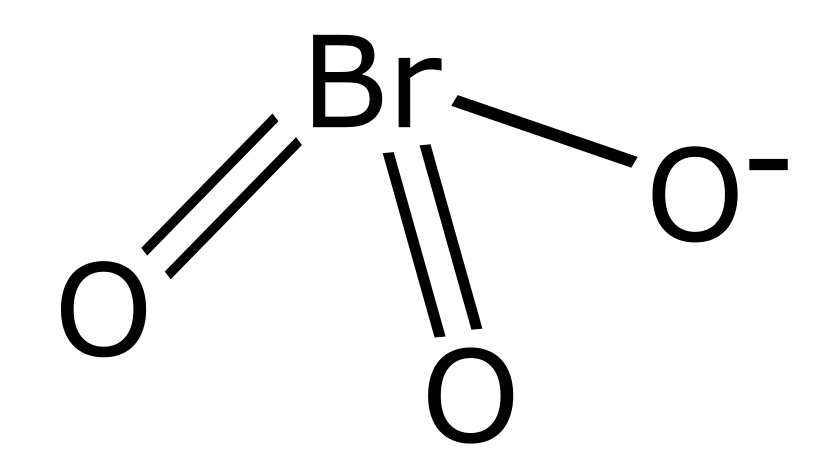
Bromic acid, sodium salt
Sodium bromate (NaBrO3)
sodium;bromate
99897
232-160-4
NaBrO3
150,90 g/mol
Thioacetic Acid 98%
Thioacetic acid is an organic intermediate.
It is used in chemical synthesis to introduce thiol groups into the molecule. Thioacetic acid is used to destroy peroxides as an alternative to aqueous reducing agents and to produce polymers and rubber.
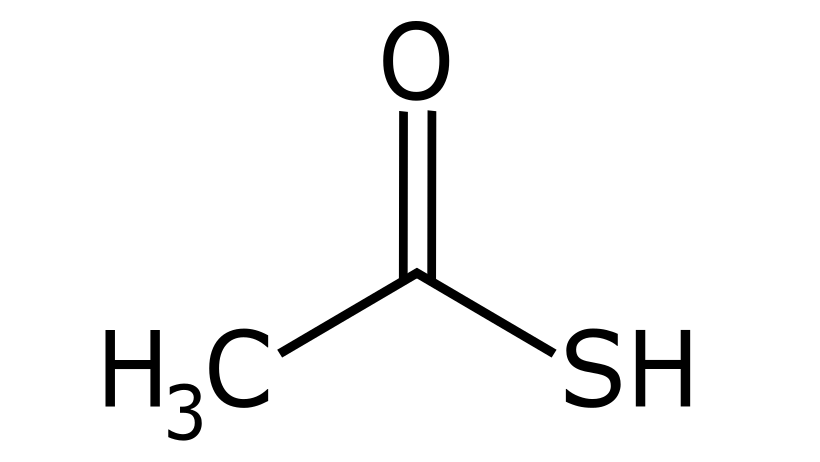
Acetic acid, thio-
Ethanethiolic acid
Thionoacetic acid
Monothioacetic acid
Methanecarbothiolic acid
ethanethioic S-acid
99649
208-063-8
C2H4OS
76,11 g/mol
Thiomalic Acid 97%
Thiomalic acid is an organic intermediate.
It is used for the synthesis of anti-corrosion agents, soil fumigants and active pharmaceutical ingredients.
Thiomalic acid is used as a brightener in metal coating and galvanising agents and as a catalyst and stabiliser for PVC.
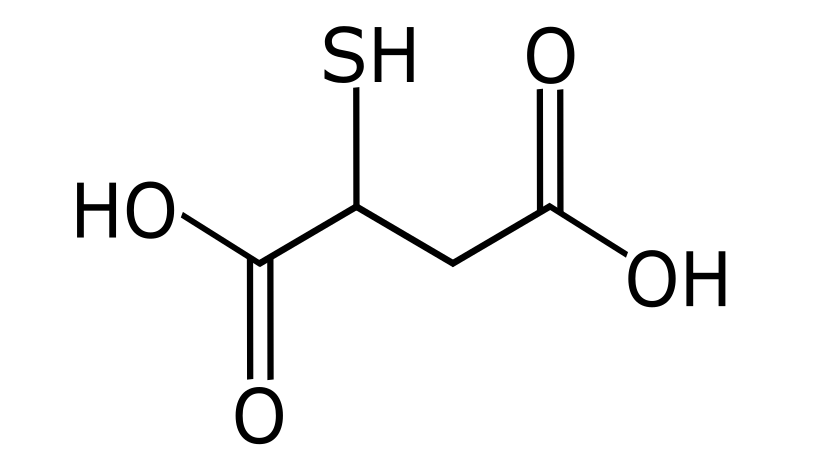
Butanedioic acid, 2-mercapto-
Succinic acid, mercapto-
Butanedioic acid, mercapto-
2-Mercaptobutanedioic acid
Mercaptobutanedioic acid
2-sulfanylbutanedioic acid
98196
200-736-4
C4H6O4S
150,15 g/mol
Thiosalicylic Acid 97%
Thiosalicylic acid is an organic intermediate.
It serves as a precursor to the dye thioindigo and is used to produce preservatives.
Thiosalicylic acid is a precursor for drugs.
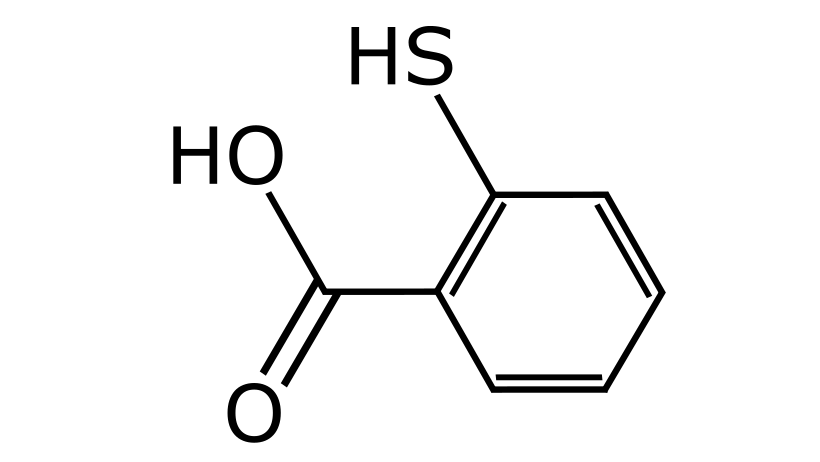
2-Mercaptobenzoic Acid
Salicylic acid, 2-thio-
Carboxythiophenol
Thiophenol-2-carboxylic acid
2-sulfanylbenzoic acid
99657
205-704-3
C7H6O2S
154,18 g/mol